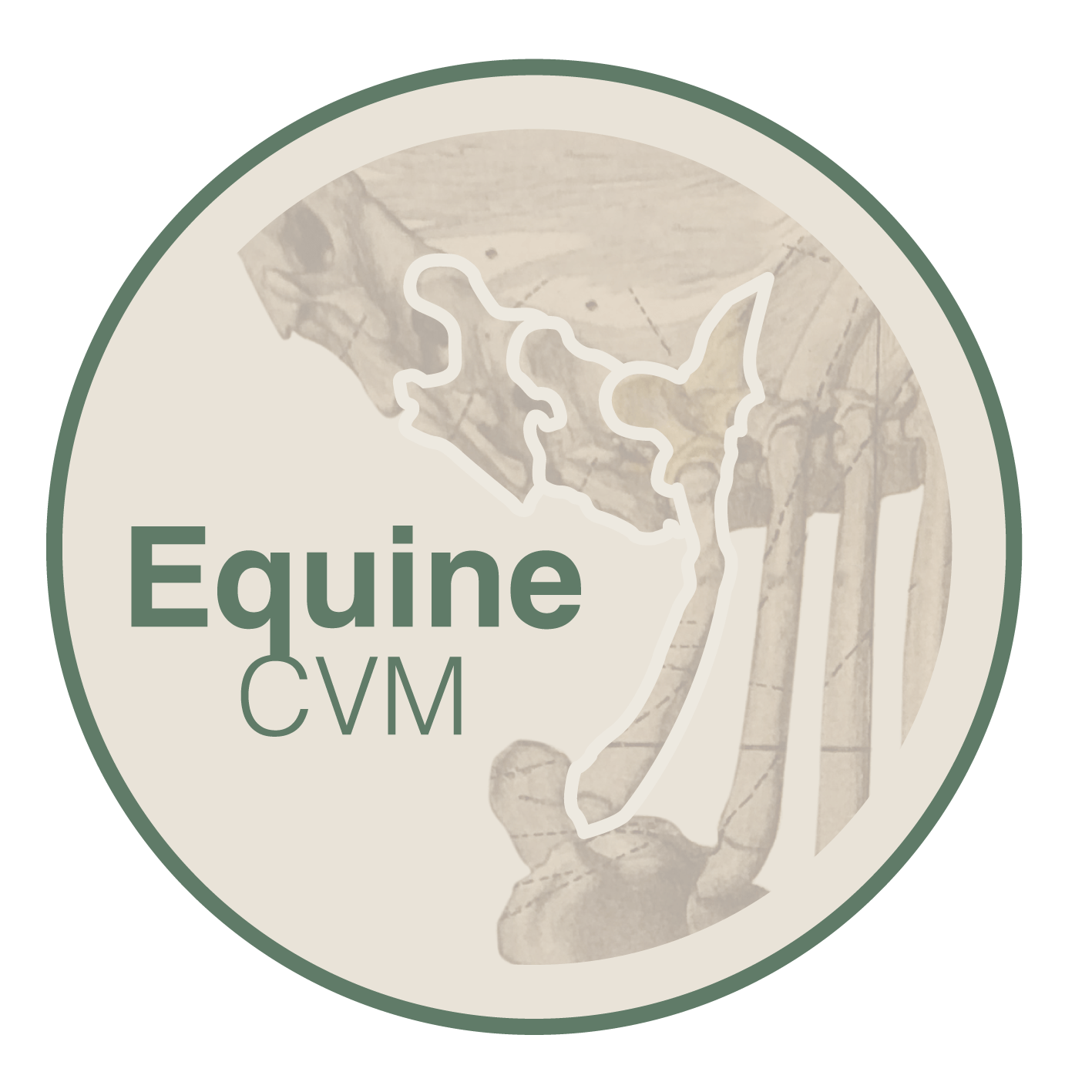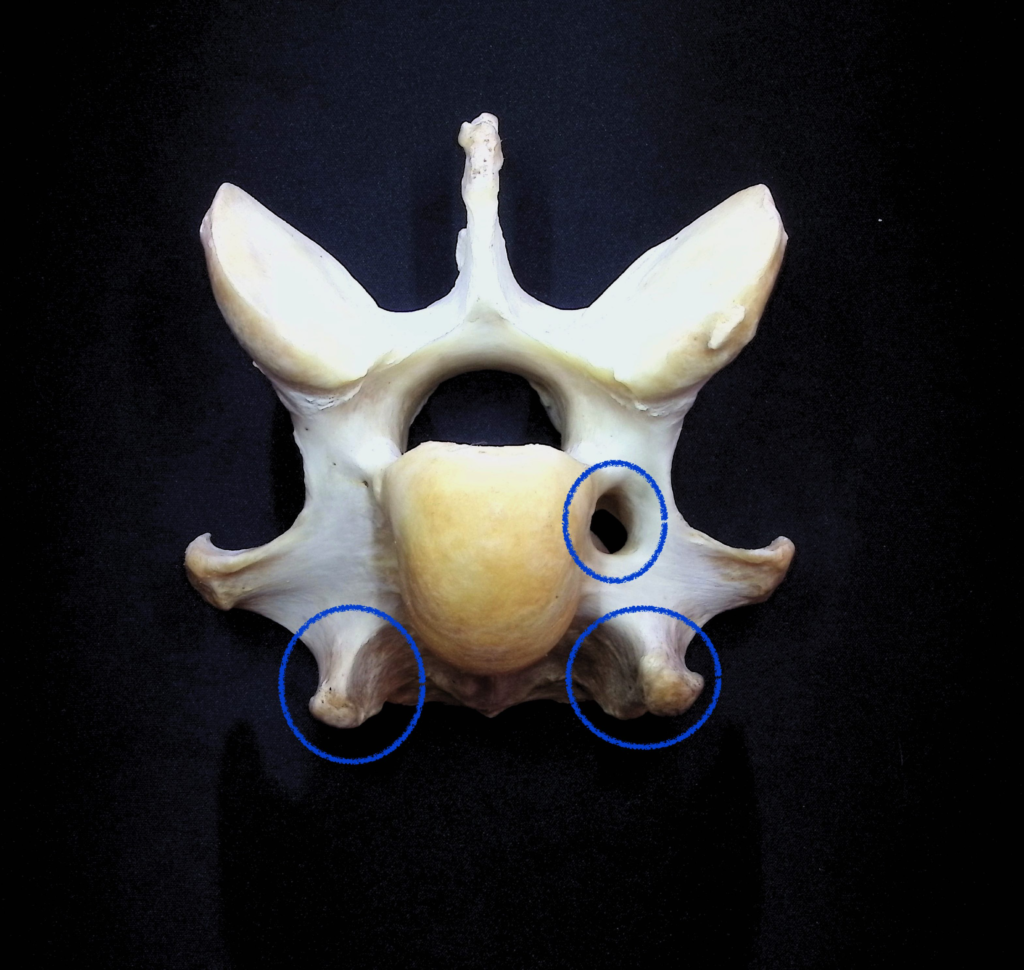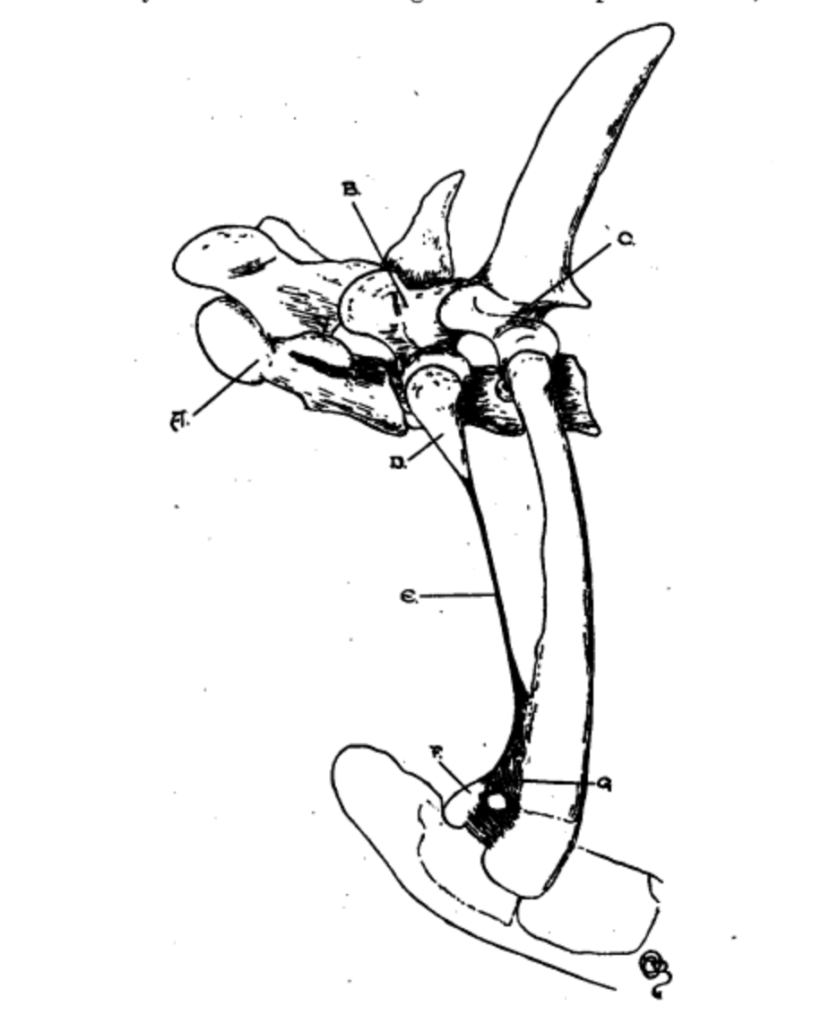ECVM, or Equine Complex Vertebral Malformation
It has been known for a long time that there are 'anatomical variations' of the last 2 cervical vertebrae (C6 and C7) in the horse. No clinical relevance has been attributed to this for a long time.
In recent years, however, more and more attention has been paid to this anatomical region, and there is a growing awareness that in addition to the variation in the bony lines on the outside of the vertebrae, other anatomical variations can also be associated with these anatomical variations.
This can be (bony) anatomical variations in the rest of the vertebrae, variation in the construction and attachment of muscles at the level of the spine. A different course of nerves and blood vessels in this region.
When anatomical variations have clinical consequences (the anatomical variation leads to abnormal or poor functioning of the body), then one can consider using the term 'malformation' instead of 'anatomical variation'.
Another anatomical variation that is also more commonly found nowadays is the (partial) absence of the first rib(s). At least, instead of a bony rib arch, one can sometimes finds a tight connective tissue strand during dissection.
ECRM, or Equine Cranial Rib Malformation
This has been described in previous studies as a manifestation of ECVM, only observed when horses also have the anatomical variations of the 6th and 7th cervical vertebrae. However, recent insight shows that horses that would not be radiologically classified as horses with ECVM (typical anatomical variations of the 6th and 7th cervical vertebrae) can also have this anatomical variation of the first ribs.
This is why we have given this anatomical variation a separate name: ECRM: Equine Cranial Rib Malformation.
We do suspect that the percentage of horses with ECRM is higher in horses with ECVM than in horses without ECVM.
Uit onderzoek van familiebanden hebben wij sterk het vermoeden dat erfelijkheid een rol speelt bij het ontstaan van ECVM. Tot nog toe zijn er geen duidelijke aanwijzingen voor omgevingsfactoren. Ook zijn er geen aanwijzingen dat het ontstaat tijdens het leven. De huidige bevindingen passen bij het beeld van een erfelijke vormvariatie welke het paard dus reeds bij geboorte mee krijgt.
Als we terug in de tijd gaan vinden we rond 1900 verschillende onderzoeken over dit onderwerp in Duitsland en in Engeland. Deze onderzoeken zijn destijds gedaan door R. Schmaltz en O. Charnock Bradley, die beiden tot op de dag van vandaag een duidelijke invloed hebben in de huidige anatomie-leer. Deze onderzoeken creëerden wellicht meer vragen dan antwoorden, en lieten toen al zien dat er meer onderzoek nodig was op dit gebied.
Na deze periode vinden we een lange tijd weinig tot niks in de literatuur. Vanaf het begin van deze eeuw begint er weer onderzoek op te duiken. Dit nog in kleine aantallen en nog met ver uiteenlopende conclusies.
De laatste jaren zien we dat de onderzoeken meer duidelijkheid en draagkracht aan het krijgen zijn. Door nieuwe apparatuur en inzichten kan het duidelijker in beeld gebracht worden bij het levende paard, daarnaast wordt een klinisch beeld steeds vaker in onderzoek als relevant gezien.
Dit voortschrijdend inzicht van de laatste jaren leidt tot de conclusie dat verder onderzoek zeer noodzakelijk is.







